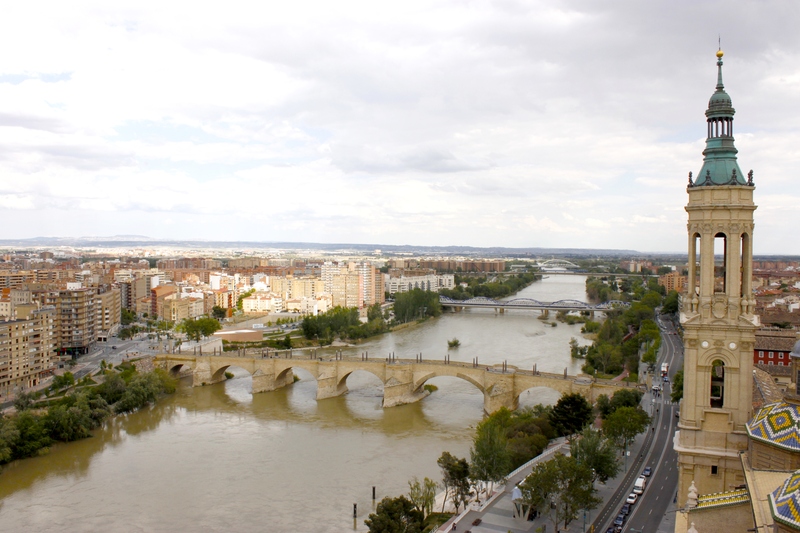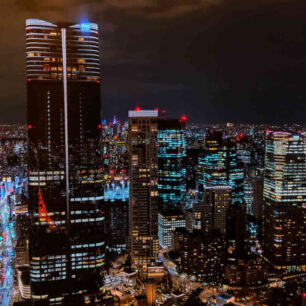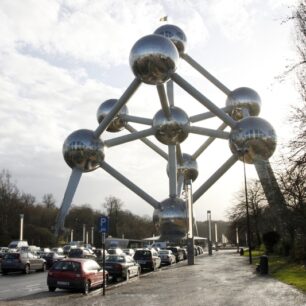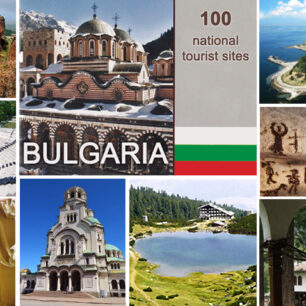The Historical Fabric of Zaragoza
Zaragoza’s story begins more than 2,000 years ago, when the Roman Emperor Augustus founded the city of Caesaraugusta around 14 BCE. Built over the Iberian settlement of Salduie, it became one of the great Roman outposts in Hispania. Over time, it passed through the hands of Visigoths, Moors, and Christian kings, each leaving an indelible mark on the city’s architecture and culture.
Today, visitors can still step into the remains of that Roman world — from ancient walls and theaters to the excavated forum and baths beneath the Plaza de la Seo. These ruins are not isolated relics; they breathe alongside modern life, woven into the rhythm of the city streets.
Augustus, Ruins & River Views
Emperor Augustus and the Roman Legacy
My first morning began at Plaza del César Augusto, where a proud bronze statue of the emperor himself stands sentinel. Around the monument lie fragments of the old Roman walls, silent witnesses to centuries of urban life. The square feels like a living history book — where traffic, cafés, and ancient stones share the same space.
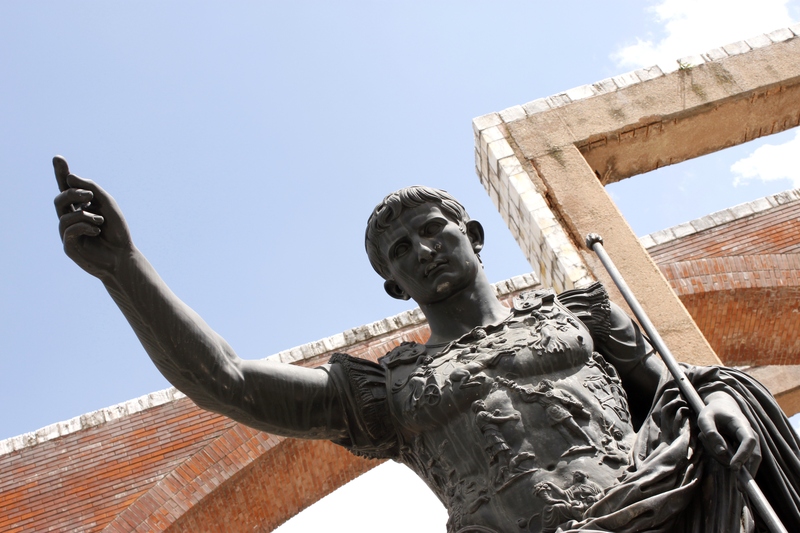
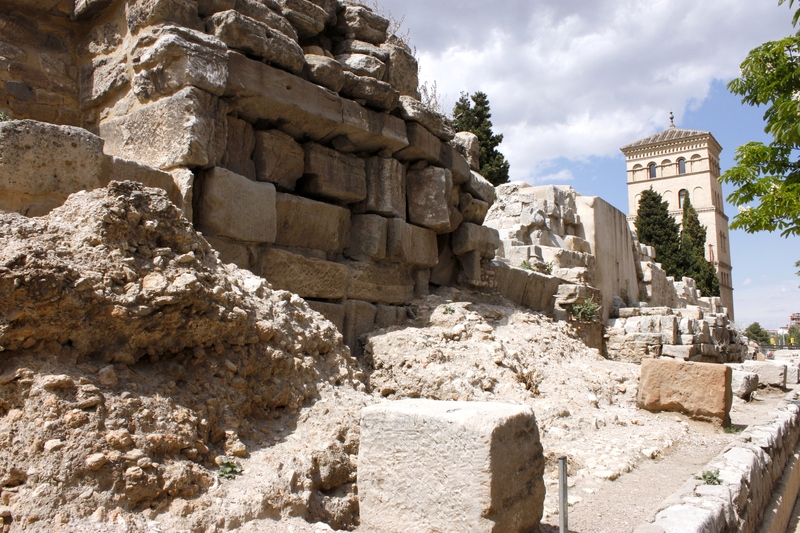
Crossing the Puente de Piedra and the Watchful Lions
Following the sound of water, I reached the Puente de Piedra, or Stone Bridge — one of Zaragoza’s most iconic landmarks. The bridge, built between 1401 and 1440, replaced older Roman and Muslim structures that had spanned the Ebro River centuries before.
Four magnificent bronze lions guard its entrances, the proud symbols of Zaragoza. The locals say these lions watch over the city and its river, protecting it from both floods and fate. From the bridge, the Basilica del Pilar rises in the distance, its towers and domes mirrored in the Ebro’s calm surface. As the evening light turned golden, the reflection felt almost sacred — a perfect moment for the camera and the soul.
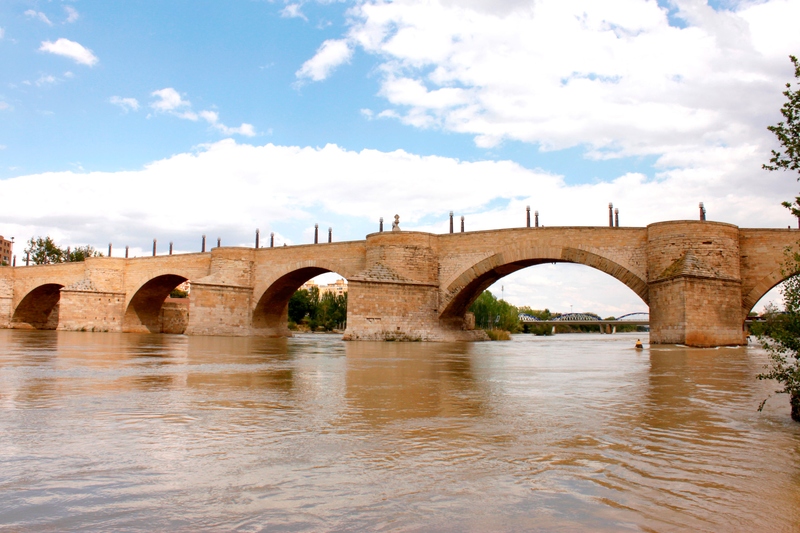
Bronze Stories, Street Art & a Night at El Plata
Zaragoza’s personality lives not only in its grand buildings but also in its bronze figures scattered throughout the city — small but powerful storytellers of memory, humor, and everyday life.
The Boy Sitting and Watching the Sky (Plaza de San Felipe)
Sculpted by Santiago Gimeno Llop, this statue shows a young boy gazing toward the sky — or more precisely, toward the spot where the beloved Torre Nueva once stood. Built in 1504, this leaning Mudéjar tower was demolished in 1892. The boy’s eternal gaze preserves its memory, a tender reminder of what was lost but never forgotten.
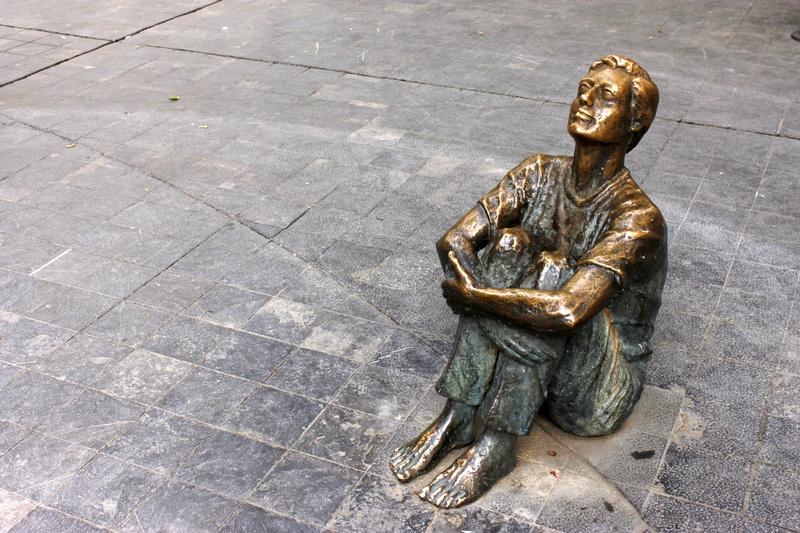
Caballito de la Lonja
Near the Lonja building, a small bronze horse stands as a tribute to local photographer Ángel Cordero Gracia, who from the 1920s to the 1970s captured childhood portraits using a paper horse as a prop. The sculpture recreates that moment of innocence — a piece of local nostalgia turned into art.
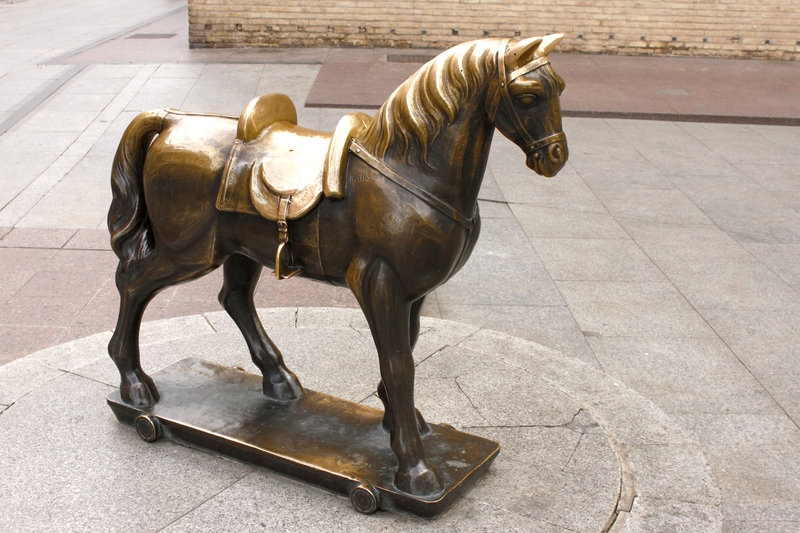
The Reclining Figures in Plaza del Pilar
On the plaza before the Cathedral-Basilica of Our Lady of the Pillar, bronze sculptures of reclining men and women rest in contemplative poses. They reflect the human side of Zaragoza — peaceful, grounded, and at ease beneath the basilica’s towering domes. These works remind visitors to slow down and be part of the city’s quiet heartbeat.
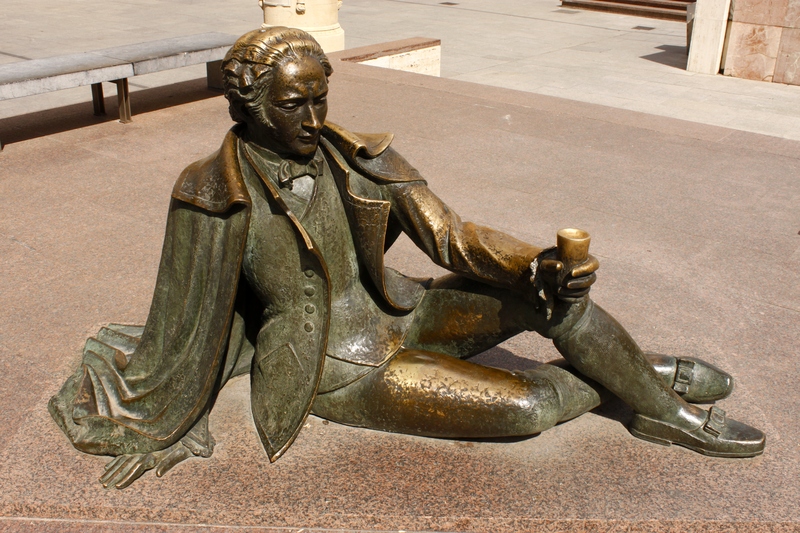
Zaragoza’s Street Art and Graffiti Culture
Walking through neighborhoods like El Gancho and San Pablo, I discovered Zaragoza’s modern artistic pulse. Entire walls transform into vivid murals, blending color, identity, and rebellion. The city’s Festival Asalto, one of Europe’s major urban art festivals, invites artists to reimagine public spaces every year.
Here, 2,000-year-old stones meet fresh paint. The contrast is stunning — history wearing a new face, confidence blooming on forgotten walls.
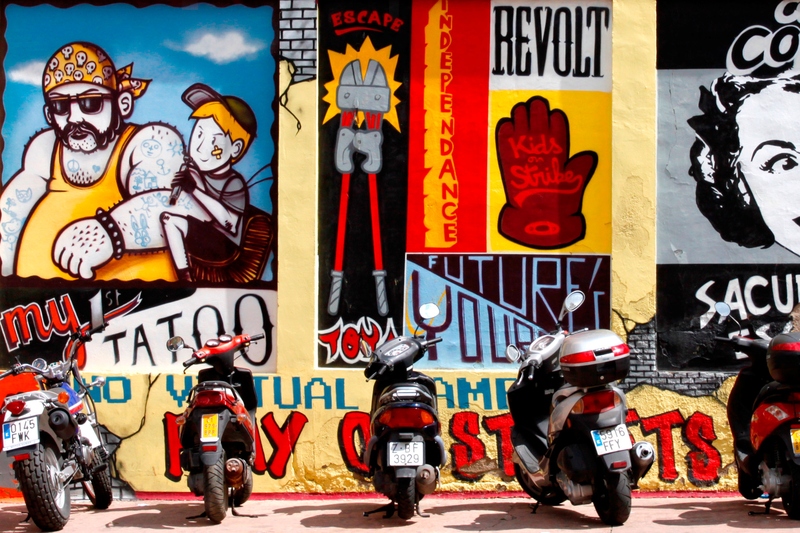
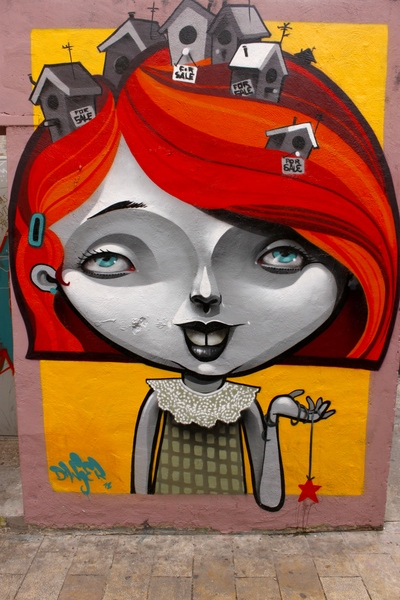
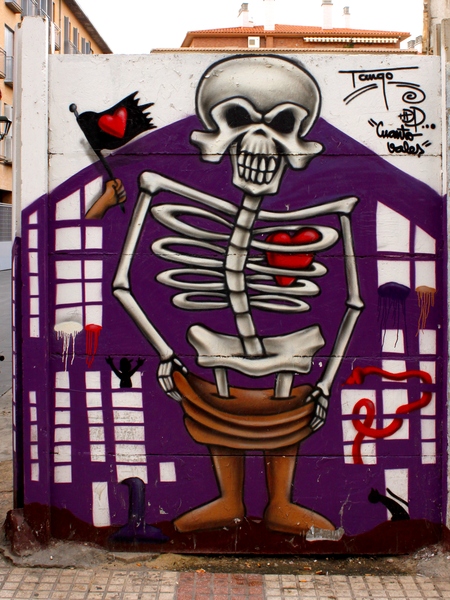
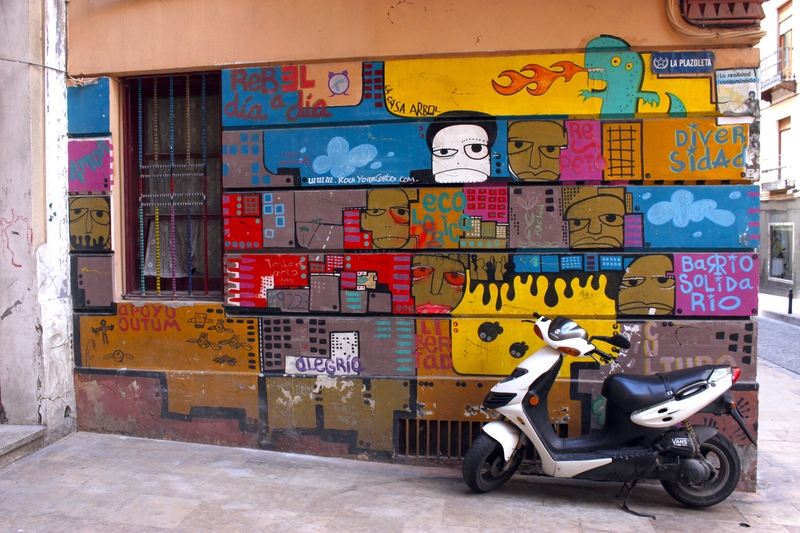
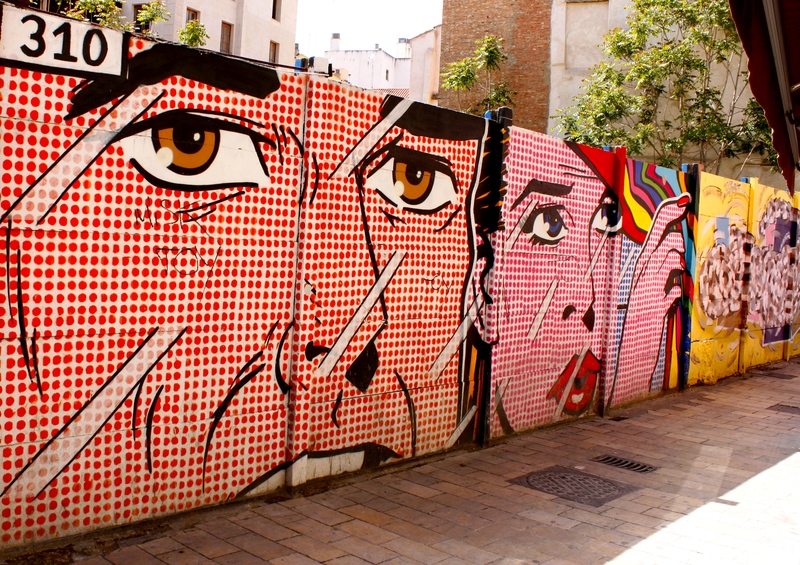
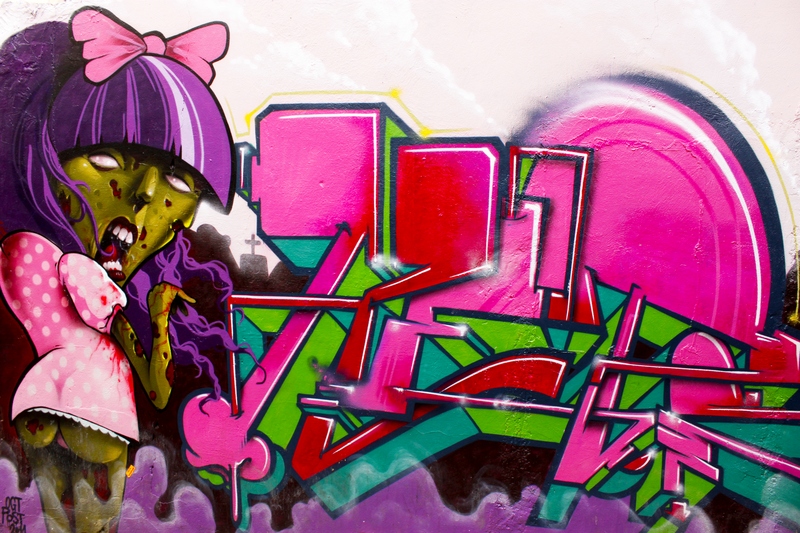
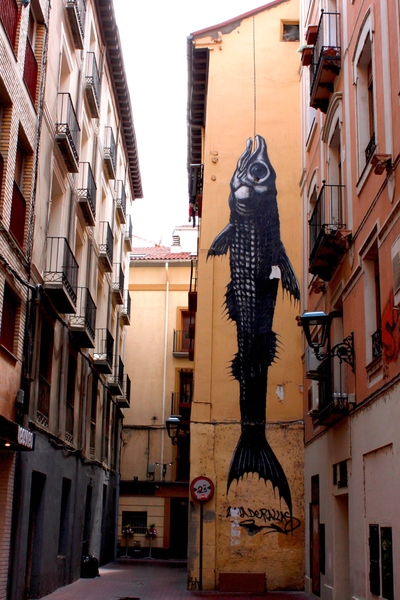
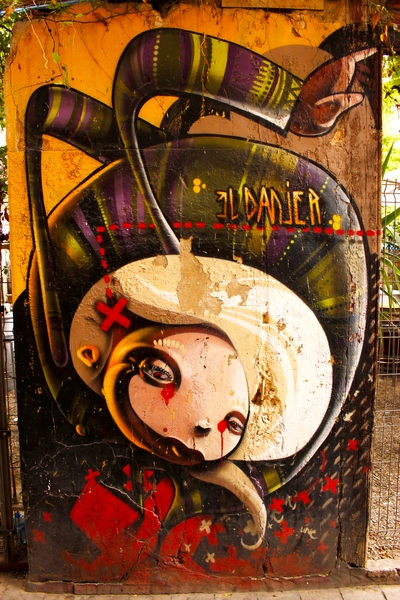
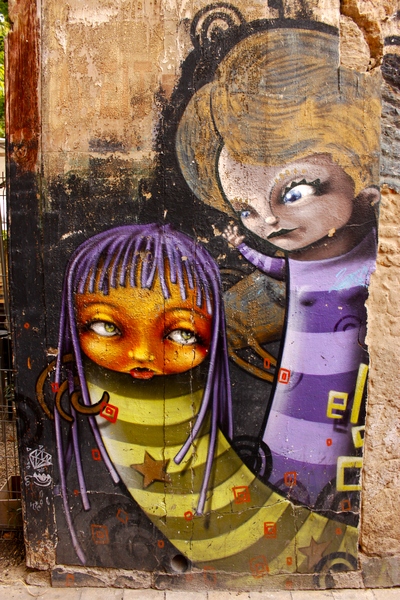
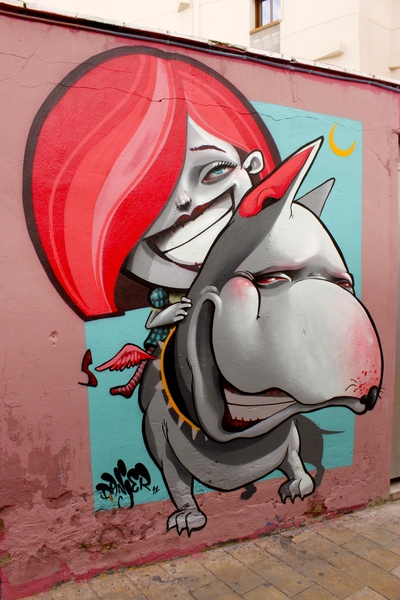
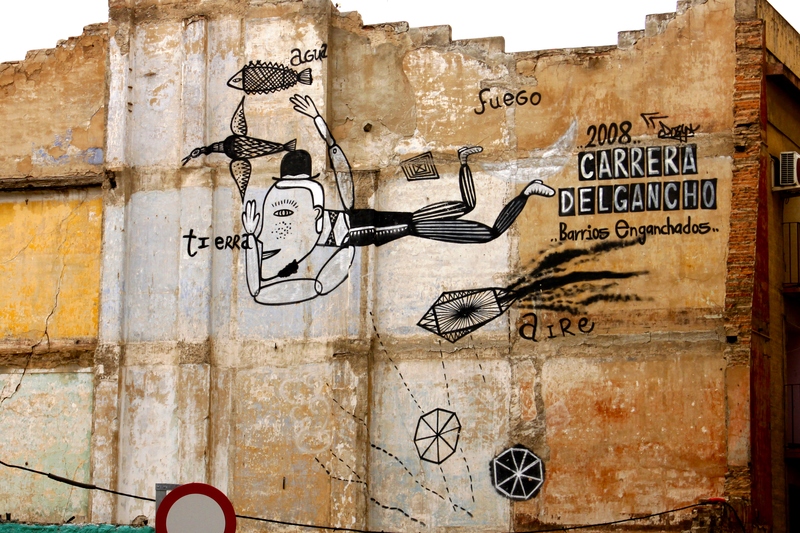
El Plata Burlesque Cabaret: Night Spectacle in El Tubo
When night fell, I ventured into El Tubo, the narrow, lively quarter famous for tapas and music, to experience the legendary El Plata Cabaret. Originally founded in 1920 and revived in 2008 under the creative direction of filmmaker Bigas Luna, El Plata remains one of Spain’s most fascinating venues.
The evening unfolded in a swirl of music, humor, and sensual performance — a revival of vintage glamour mixed with modern artistry. The red velvet curtains, glittering costumes, and laughter made it feel like stepping into a dream between decades. It was vibrant, surreal, and unforgettable — the kind of night that makes you fall in love with a city’s eccentric soul.
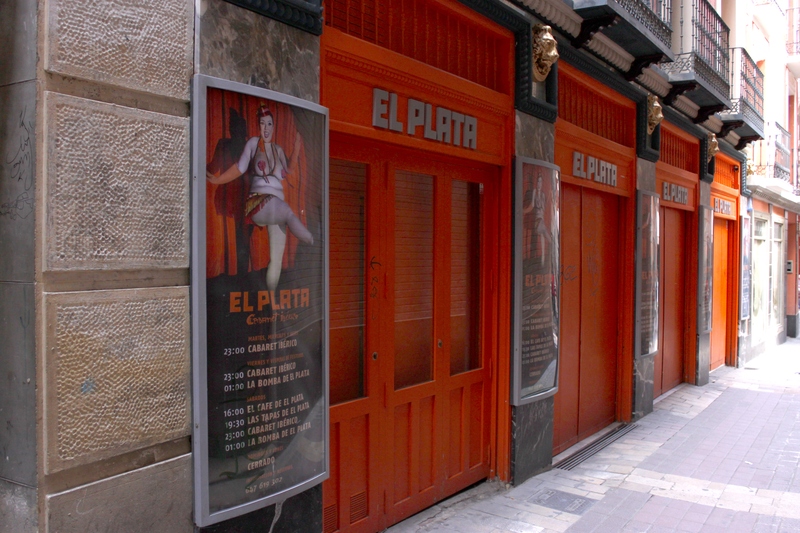
Towers, Views & Farewell
The Cathedral-Basilica of Our Lady of the Pillar
Few places capture the spirit of Zaragoza like the Basilica del Pilar. Legend says the Virgin Mary appeared to Saint James here in 40 AD, placing a pillar of jasper as a sign of faith — making this the first Marian shrine in Christendom.
The basilica that stands today is a magnificent Baroque structure, its twelve domes decorated with frescoes by Francisco de Goya, a native son of Aragón. Inside, light filters through colored glass onto marble floors, and the scent of wax and incense fills the air.
Climbing the Mirador Tower was the highlight of my final day. From its heights, I saw the Ebro River winding through the city, the red rooftops glinting in sunlight, and the lion statues on the bridge far below. It felt like seeing the entire history of Zaragoza — ancient, medieval, and modern — unfold in one sweeping view.
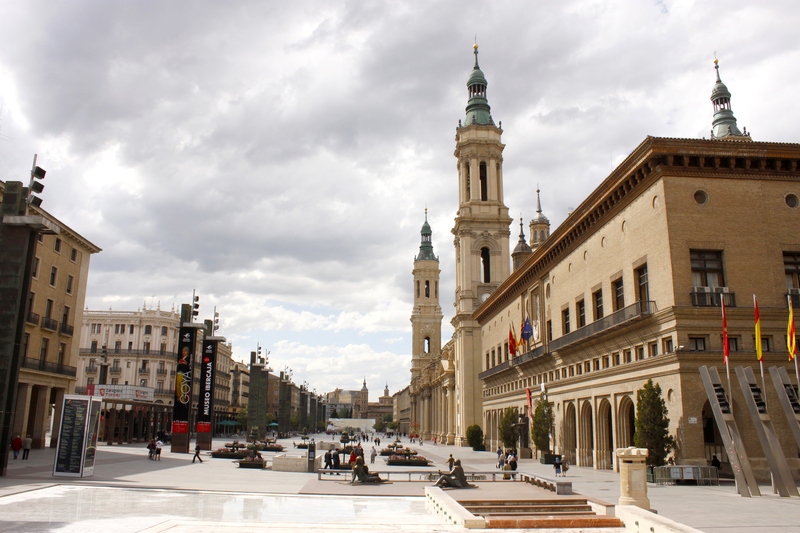
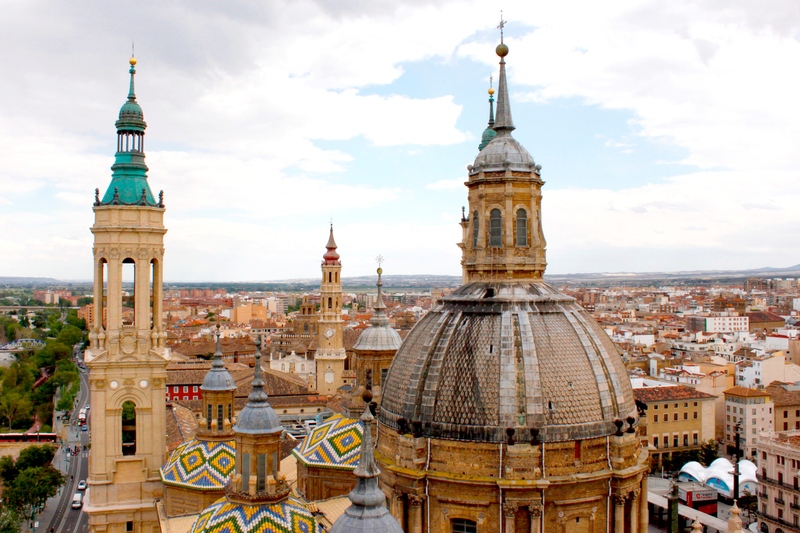
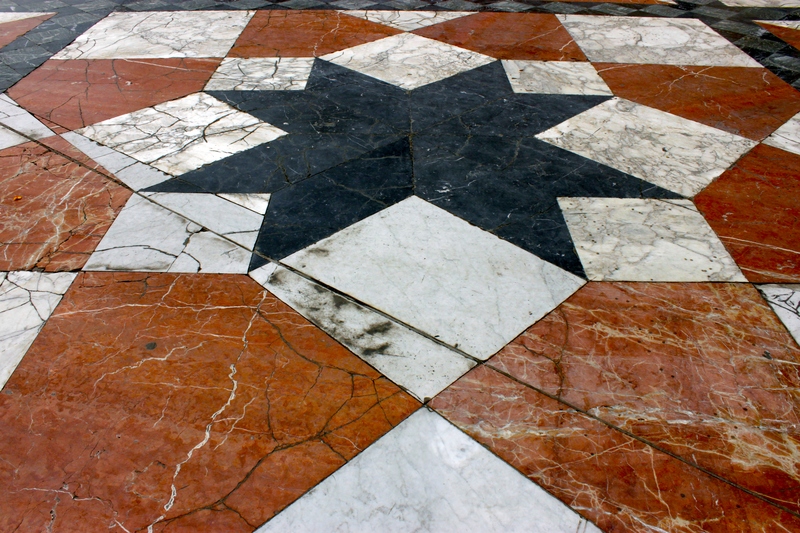
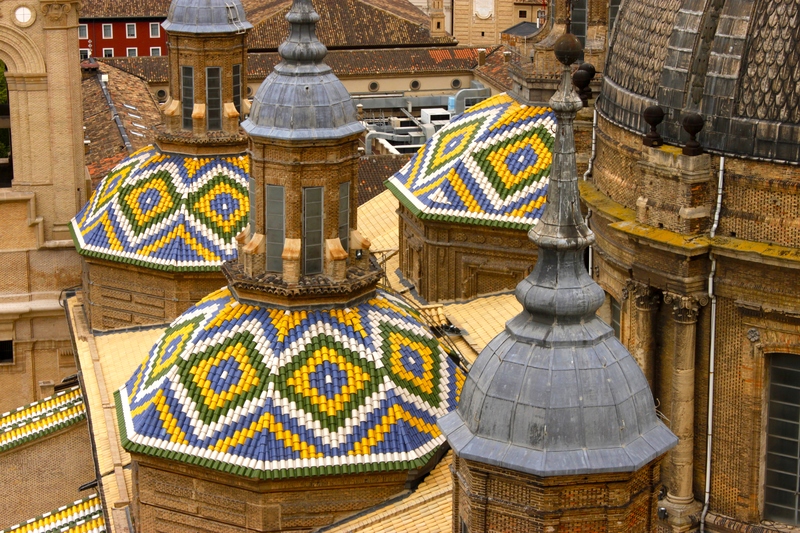
Reflections and Tips for Travelers
Zaragoza is a city that doesn’t shout for attention — it invites discovery. Its beauty reveals itself slowly, through its textures and contrasts: the laughter of a street artist painting on Roman walls, the quiet bronze boy lost in thought, the shimmer of the Ebro under a sunset bridge.
For travelers and photographers alike, it’s a destination that rewards curiosity and sensitivity.
Travel Tips:
- Neighborhoods to explore: El Tubo for tapas and nightlife, San Pablo for street art, and Plaza San Felipe for local charm.
- Local flavor: Try “ternasco de Aragón” (roast lamb) or a glass of regional Cariñena wine.
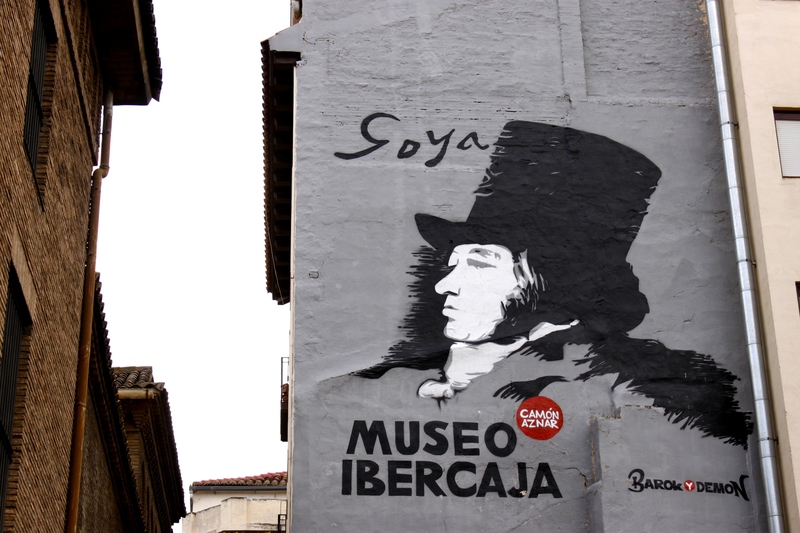
Let the world guide your footsteps and your soul dear travelers!


